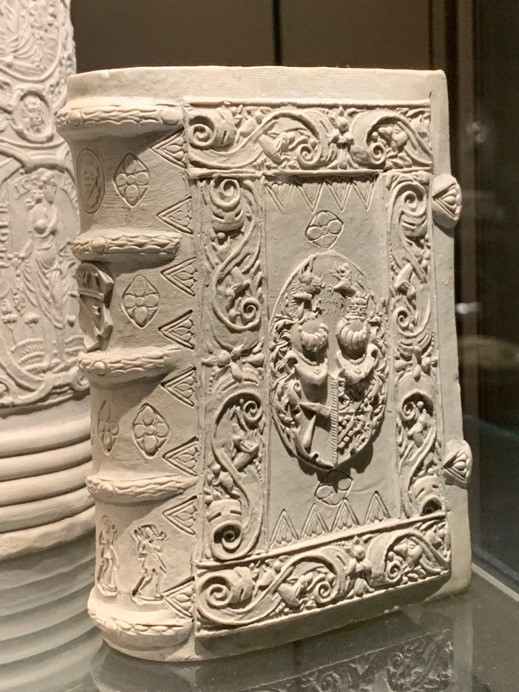

Stone Books
My Louvre by Antoine Compagnon

Stone Books
These two sandstone books intrigue me. They are imitation books, fakes. One is white, the other enameled grey and blue. They bear coats of arms and come from the Rhineland: one from Raeren, between Liège and Aachen; the other from Siegburg, not far from Cologne—regions known for their ceramics. They were made in the late sixteenth-century. The printing press was a little more than a century old, but two centuries earlier Petrarch had come to these learned cities in search of ancient manuscripts. These charming artefacts aren’t just knickknacks, they are tools that fulfilled a precise need: they are hand warmers, elegant little heaters to put in one’s pocket before going to mass or to church, to protect from chilblains (Richelieu, room 521, OA 444 and 454). These books cannot contain embers, but I surmise that the stone could retain heat for the length of the service. Cherry on the cake: they once belonged to Charles Sauvageot, second violinist of the Paris Opera and the model for Cousin Pons in Balzac’s novel, another musician, bachelor, and collector. Sauvageot donated hundreds of medieval and Renaissance objects, including many Bernard Palissy pieces, to the Louvre, where he lived during his final years and where a room bears his name (Richelieu, room 518). Finally, these sandstone books remind me of Anselm Kiefer’s lead books—as loaded with splendor as they are useless—including those of the Danae exhibited on the landing of the Cour Carrée’s north staircase.